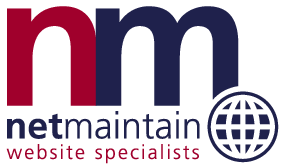One of the more common complaints made by people researching their available options for a website is that they often don’t understand the geek terminology used by the “tech nerds”.
To try and help bridge this communication barrier we thought a list with some of the more popular terms explained may help. Rather than get technical with this list and thereby defeat the purpose of the exercise we will leave the explanations as rather broad descriptions rather than strict definitions.
Please keep in mind that some of these terms can be used interchangeably, even by people who should know better.
Web Designer
A web designer is someone who builds websites and would usually be expected to have a good working knowledge of HTML (the mark-up language that is used to ‘program’ web pages), CSS (used to style the web pages) and basic JavaScript (used to provide complex interactivity to web pages). Traditionally, web designers tend to come from a graphic art background and may have no formal training in web related technologies.
Web Developer
A web developer would normally have the same skills as a web designer but also be fluent in the use of some of the common server-side programming languages such as those used with ASP.NET as well as PHP and ASP. They would also be familiar with T-SQL and the use of database tools such as SQL Server, MySQL and Access. The web developer will also have experience dealing with web servers such as IIS and Apache.
Apart from being involved in building websites the web developer will also be heavily involved in developing web applications.
Web Application
A web application is a type of website that has functionality that requires processing by the web server an addition to the normal display of web pages. Web applications typically require two-way communication with the web server i.e. a normal website will simply send the required page for display on the user’s computer screen, whereas web applications will send data back to the web server from that page such as from a form the user as filled out.
At its simplest a web application may be a contact form that records a person’s details, sends those details to the website owner and gives a confirmation response to the user.
At a more complex level a web application could be something such as an online shop that handles the selection of products from a list of thousands, the processing and display of shopping cart transactions and the recording of those transactions.
Server-side Programming Language
Server-side programming languages are the basis for what web applications are built on because they allow communication between the web server and the web page that the website visitor is using.
Common server-side programming languages are those used within the ASP.NET framework such as C# and VB.Net as well as PHP.
Web Server
A web server is basically a computer sitting in a data centre (where thousands of similar computers reside) connected to the internet and dedicated to storing and running websites.
Hosting
Hosting is the process of allocating space on a web server for a specific website.
Domain Name
A domain name is the title by which a website can be found and operates in a similar fashion to a telephone number. Basically you rent the use of the name for the period of the licence belonging to that particular name, usually 2 years. An example of a domain name would be netmaintain.com.au
URL
Used interchangeably with URI, the URL is the full address of a website or web resource. An example of a URL would be http://www.netmaintain.com.au
DNS
DNS records are the details that link a domain name with the specific web server that holds the website specified by the domain name. DNS records can also provide other pointers such as where email should be directed.
MX Records
MX records are a specific type of DNS record relating to email.
Banner Rotator
A banner rotator is a content area usually found at the top of a web page that displays a range of content, usually images, in a rotating sequence.
SEO
Search engine optimisation is the use of tools and techniques to help a website achieve the best possible ranking from a search engine search.
SEM
Search engine marketing is the development of a strategy for generating traffic to a website through methods such as advertising on search engines.


